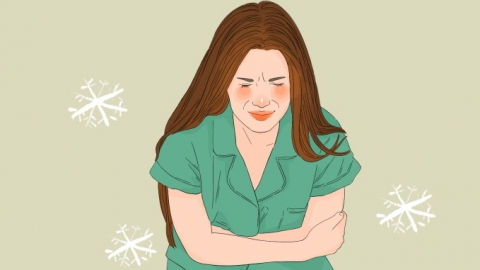How to Regulate and Treat Cold Uterus
Generally, the regulation and treatment of "cold uterus" (gonghan) mainly include lifestyle adjustments, dietary regulation, medication, traditional Chinese medicine (TCM) therapy, and moxibustion. Specific analyses are as follows:
1. Lifestyle Adjustments
Cold uterus is often related to exposure to cold and invasion of cold pathogens. Daily attention should be paid to keeping warm, especially protecting the waist, abdomen, and lower limbs from cold environments. Avoid wearing belly-baring clothes or short skirts during menstruation. Maintain a regular sleep schedule, avoid staying up late, and reduce physical depletion. Engage in moderate exercise such as brisk walking or yoga to promote blood circulation, help dispel internal cold, and improve symptoms such as cold hands and feet and menstrual cramps caused by cold uterus.

2. Dietary Regulation
Choose warming foods such as lamb, longan, red dates, and ginger to nourish the body with warmth and replenish yang energy through diet. Avoid raw and cold foods like ice cream, chilled beverages, and sashimi to prevent aggravating cold conditions. During menstruation, drinking ginger and red date tea or brown sugar ginger tea can help warm the uterus and relieve menstrual discomfort.
3. Medication
Patients may take proprietary Chinese medicines under medical guidance, such as Ai Fu Nuan Gong Wan, Wen Jing Granules, and Yi Mu Cao Granules. Ai Fu Nuan Gong Wan helps regulate qi, enrich blood, warm the uterus, and regulate menstruation, suitable for cold uterus due to blood deficiency with qi stagnation and deficiency-cold in the lower jiao. Wen Jing Granules warm the meridians, dispel cold, nourish blood, and remove blood stasis, improving cold-congealing and blood-stasis type cold uterus. Yi Mu Cao Granules promote blood circulation and regulate menstruation, helping alleviate menstrual irregularities and dysmenorrhea caused by cold uterus.
4. Traditional Chinese Medicine Therapy
TCM therapies improve cold uterus by unblocking meridians and promoting smooth flow of qi and blood. Common methods include massage (tuina) and herbal heat application. During massage, key acupoints in the waist and abdominal area—such as Guanyuan (CV4) and Qihai (CV6)—are stimulated to enhance local circulation. Herbal heat application involves placing warm herbal packs on the waist and abdomen, allowing the warming properties of the herbs to penetrate the skin, expel cold, and relieve symptoms of cold uterus.
5. Moxibustion Therapy
Moxibustion uses thermal stimulation of acupoints to warm the meridians, dispel cold, support yang, and prevent collapse. Commonly used points include Guanyuan (CV4), Qihai (CV6), Shenque (CV8), and Mingmen (GV4). The warming effect of moxa penetrates through the acupoints into the body, replenishing yang energy in the uterus and eliminating cold. It is particularly effective for deficiency-cold type cold uterus, significantly improving symptoms such as menstrual pain, dark menstrual blood with clots, etc.
In addition, emotional stability should be maintained during treatment; prolonged anxiety or depression should be avoided. Regularly monitor bodily responses, and if symptoms do not improve or worsen, seek timely medical advice to adjust the treatment plan and ensure optimal results.




